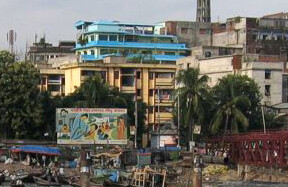Pop stars and politicians across the globe start crossing their fingers each year when the Nobel Committee begins its deliberations on the Peace Prize. This time around, however, the coveted honor was bestowed on the "banker to the poor," a former economics professor from Dhaka, Bangladesh.
In the 1970s, Dr. Muhammad Yunus pioneered the practice that has come to be known as microfinance—small-scale loans made mainly to women with little or no access to traditional sources of financial capital. The concept has proven wildly popular and Grameen, the bank Yunus founded in 1983, has seen its model replicated by lenders, NGOs, and advocacy groups in dozens of countries.
By challenging traditional banking notions about the credit worthiness of borrowers and often giving uncollateralized loans, microfinance has unlocked the entrepreneurial ambitions of some of the world’s poorest people. In addition, it is responsible for creating and sustaining new income-generating activities in poor areas traditionally dependent on subsistence-level farming.
Over the last three decades, the popularity of microfinance has steadily increased. And now, with Yunus’s Nobel Prize, microfinance has hit the front page. Many in the West tout microfinance as a pivotal innovation in the fight against poverty in the developing world. Organizations such as ACCION International, FINCA, and Trickle Up finance millions of micro-entrepreneurs in dozens of countries.
One reason for this upsurge in popularity is that in Bangladesh, as in other places where microfinance has taken root, the overwhelming majority of borrowers have been women. This gender policy is by design. Women in the developing world, whether due to cultural factors or pure poverty, are frequently excluded from participating in economic activity outside of the home. But in the case of microfinance they tend to be more financially responsible than men, and more integrated with the peer groups that mutually borrow and reinforce loan repayment. Microfinance thus offers a rare and important opportunity to empower these women.
Microfinance also appeals to the Western appetite for market solutions to social problems. Micro-lending is, after all, a financial innovation that harnesses market forces, and the resulting social benefits of poverty reduction and community investment can be seen as positive externalities. Grameen Bank boasts a 98% repayment rate on loans that often carry high interest rates, indicating that microfinance is not a form of charity. The borrowers use their loans to produce a marketable product and make enough profit on the sale to pay back their lender in full. Microfinance, it seems, is good business.
Growing scholarly interest in the subject has led Western universities to offer courses in microfinance. The Consultative Group to Assist the Poor, a consortium of 33 public and private development agencies has spearheaded a drive to convince leading MBA programs to include microfinance courses in their curricula. But moving micro-lending into the academic and financial mainstreams has proven more difficult than expected.
Proponents of microfinance have been accused of overselling its potential for broad national development. Rather than a great leap forward, the microfinance model represents the first baby steps away from the traditional model of a village economy. Sophisticated economies are made up of dependent and complementary layers of activity in various economic sectors. There is a significant gap between promoting mom-and-pop businesses that serve local communities and moving a national economy into the mainstream of a complex and integrated world system. FLOW founder and CEO Michael Strong has termed this the "thatched ceiling."
"Microfinance represents the very best scalable initiative for improving standards of living for very poor people and I am incredibly enthusiastic about it, but it is often promoted at the expense of multi-national corporate trade and investment," said Strong in an interview with Policy Innovations. While there is certainly nothing wrong with improving the earning potential of poor women, critics like Strong argue, it is not a panacea for lifting a nation out of poverty.
Moreover, there is little evidence available to show that microfinance does what its proponents say it should: namely, improving the economic and social position of the borrower. Microfinance success stories are recounted by Western micro-lenders eager to justify their activities and attract funding, while examples of failure rarely get aired. In their recent paper, "Microfinance as Business," David Roodman and Uzma Qureshi of the Center for Global Development challenge the academic and advocacy communities to perform rigorous statistical evaluations of the effectiveness of microfinance. "What seems underappreciated… is that rigorous evaluation of how microfinance affects the poor (which differs from evaluation of how poor microfinance clients are) is rather scarce," write Roodman and Qureshi.
While most agree that the micro-financiers are well intentioned, it is unclear whether the recipients of micro-credit would be better off if they were simply given the money as outright charity. "Hardly a dollar goes into microfinance that is not motivated in part by a desire to help the poor," say Roodman and Qureshi. But the lack of serious empirical evidence supporting the claims of microfinance’s loudest cheerleaders is clearly a problem.
Like all good ideas, microfinance will have to prove itself in the unforgiving arena of scientific rigor and evidentiary proof. Will it survive? The spotlight provided by the Nobel Committee suggests that now is the opportune time to find out.





